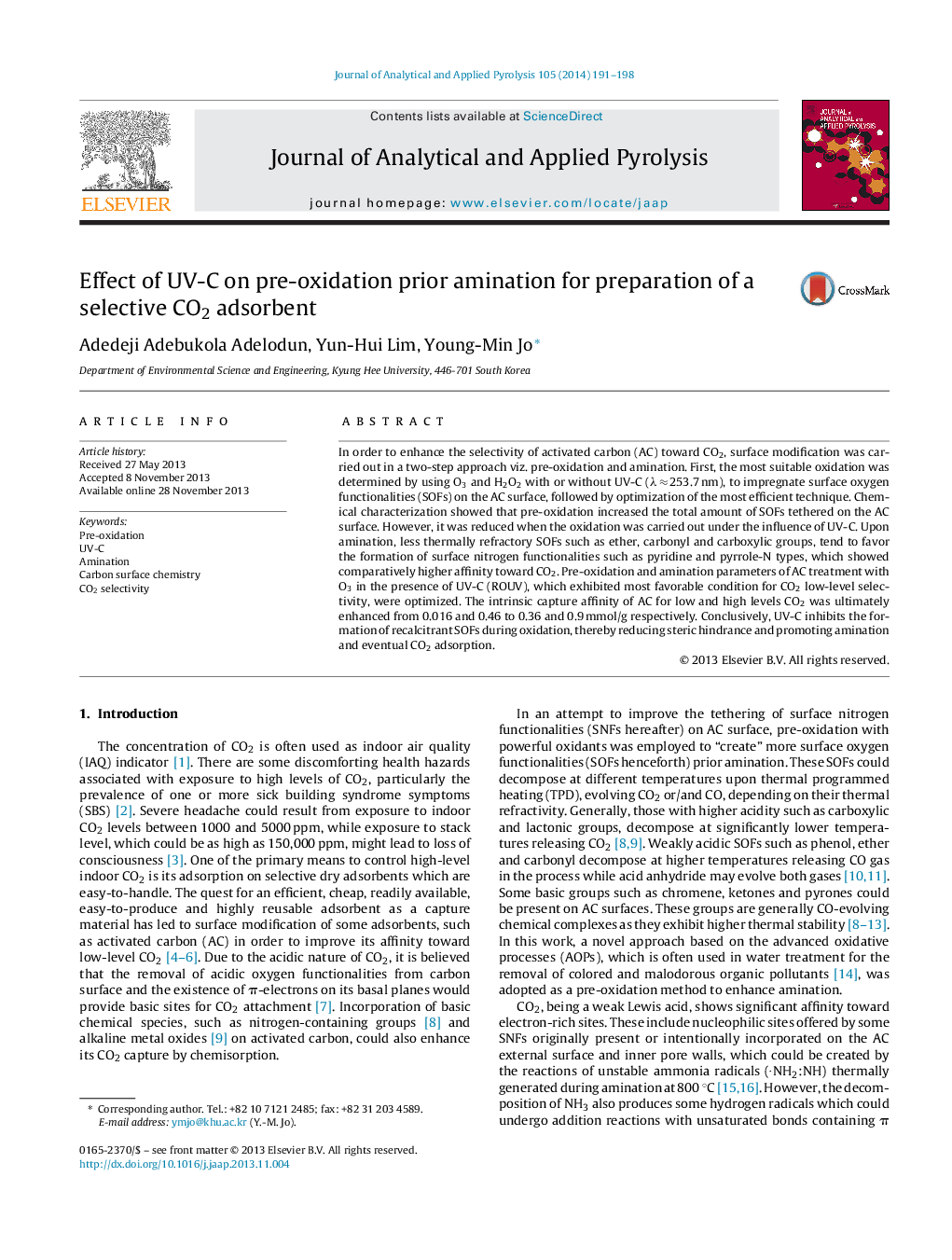| Article ID | Journal | Published Year | Pages | File Type |
|---|---|---|---|---|
| 1198368 | Journal of Analytical and Applied Pyrolysis | 2014 | 8 Pages |
Abstract
In order to enhance the selectivity of activated carbon (AC) toward CO2, surface modification was carried out in a two-step approach viz. pre-oxidation and amination. First, the most suitable oxidation was determined by using O3 and H2O2 with or without UV-C (λ â 253.7 nm), to impregnate surface oxygen functionalities (SOFs) on the AC surface, followed by optimization of the most efficient technique. Chemical characterization showed that pre-oxidation increased the total amount of SOFs tethered on the AC surface. However, it was reduced when the oxidation was carried out under the influence of UV-C. Upon amination, less thermally refractory SOFs such as ether, carbonyl and carboxylic groups, tend to favor the formation of surface nitrogen functionalities such as pyridine and pyrrole-N types, which showed comparatively higher affinity toward CO2. Pre-oxidation and amination parameters of AC treatment with O3 in the presence of UV-C (ROUV), which exhibited most favorable condition for CO2 low-level selectivity, were optimized. The intrinsic capture affinity of AC for low and high levels CO2 was ultimately enhanced from 0.016 and 0.46 to 0.36 and 0.9 mmol/g respectively. Conclusively, UV-C inhibits the formation of recalcitrant SOFs during oxidation, thereby reducing steric hindrance and promoting amination and eventual CO2 adsorption.
Related Topics
Physical Sciences and Engineering
Chemistry
Analytical Chemistry
Authors
Adedeji Adebukola Adelodun, Yun-Hui Lim, Young-Min Jo,
